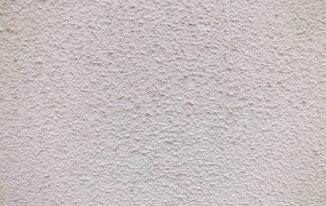Key Takeaways
- Learn about the frequent siding issues homes face and practical solutions for each.
- Discover how to identify early warning signs of siding damage, preventing bigger expenses down the line.
- Get step-by-step repair tips and advice on when to consult a professional.
- Uncover maintenance strategies that extend the life of your siding and maintain curb appeal.
Why Siding Matters for Your Home
Siding does much more than add visual charm to your house—it plays a vital role in safeguarding both the structure and the comfort within. Good siding acts as a weatherproof shield, protecting walls from driving rain, snow, and harsh winds. With quality installation and regular upkeep, your home stays dry, insulated, and energy-efficient season after season. If signs of trouble start to show—such as warped panels or faded paint—seeking an expert opinion from a reputable siding company Cincinnati can help you address the damage quickly and avoid higher repair costs in the future.
Siding failure doesn’t just mean aesthetic decline. According to the Bob Vila Siding Repair Guide, poorly maintained or damaged siding can raise your heating and cooling bills by allowing air leaks and moisture in. Siding also serves as a barrier that deters pests, insects, and rodents. Safe, intact siding even boosts your home’s resale value by assuring potential buyers that your property is well cared for. Keeping this exterior layer in good condition should be a top priority for every homeowner, no matter the climate or age of the home.
The Most Common Siding Problems
Siding stands up to countless environmental challenges, but it isn’t invulnerable. Over time, repeated exposure to the elements and everyday accidents can leave lasting physical and emotional scars. Some of the most persistent issues homeowners encounter include:
- Cracks and Gaps: Strong winds, impact from debris, or even errant baseballs can create unsightly splits, allowing water to penetrate the barrier and cause rot over time.
- Warping: In hot weather, vinyl may expand and buckle, while trapped moisture behind panels can make any material bow outward, disrupting the clean lines of your home’s exterior.
- Mold and Mildew: Damp, shaded corners are breeding grounds for unsightly black mold and green algae. These not only look bad but also pose health risks if left untreated.
- Fading and Blistering Paint: Years of sun exposure can dull bright colors, and moisture can cause paint to blister, leading to peeling and the eventual exposure of raw siding material.
- Insect Damage: Wood siding, in particular, must contend with threats from termites and carpenter ants, which can tunnel inside and undermine its structural integrity.
- Loose or Missing Panels: Improper installation or powerful storms may dislodge panels completely, leaving interior walls exposed to the weather and inviting further damage.
These problems might seem isolated at first, but even minor signs of damage can escalate. Untreated cracks allow water to enter, which may go unnoticed for months, only to reveal widespread rot or mold later. Loose siding panels compromise the house’s weather seal and lead to inflated utility bills. For practical step-by-step solutions to issues like loose siding or cracks, resources such as the Family Handyman vinyl siding repair guide offer detailed repair strategies that can be a lifesaver for homeowners.
Recognizing Damage Before It Gets Worse
Proactive inspection is a homeowner’s secret weapon. Instead of waiting for major warning signs, build a quick visual review into your seasonal routine. Walk around your home after storms, or at least every spring and fall, checking for obvious problems and subtle hints of trouble. Bubbling or peeling paint on siding surfaces, for example, may signal water trapped beneath the surface, one of the earliest signs of impending rot.
- Bubbling patches or blisters in the siding finish
- Musty odors or unexplained damp spots on interior walls
- Softness when pressing on panels, suggesting hidden rot
- Discoloration, black spots, or green streaks from mold or mildew
- Visible gaps at the joints, corners, or around windows and doors
Acting swiftly when you spot warning signs can mean the difference between replacing a panel and replacing an entire wall’s worth of siding. Addressing these small issues keeps the underlying structure dry, deters pests, and saves significant money in the long run.
DIY Fixes vs. Professional Help
Not every siding issue demands expert help. Armed with a few basic hand tools and a ladder, homeowners can often repair small cracks, reseal joints, or replace single panels. For instance, cracks in vinyl can be patched using specially formulated compounds, and panels that have slipped out of place can sometimes be reattached with the right fasteners. Removing mold spots with a mixture of vinegar and water is often enough to keep things tidy and healthy.
- For minor cracks, use exterior-grade caulk or a vinyl siding repair kit
- Replace isolated damaged panels by purchasing matching replacements from your local home improvement store
- Clean up minor mold and algae using a non-abrasive cleaner and a soft brush
Yet, larger-scale problems—such as pervasive warping, extensive mold growth behind the siding, or clear signs of deep structural damage—are best left to professionals. Experienced technicians have the right tools to check for hidden moisture, deal with insect infestations, and reinstall panels precisely, protecting your home’s warranty and long-term durability. Attempting complex repairs yourself can sometimes make matters worse or void your warranty, so know your limits and seek help when bigger issues arise.
Simple Steps to Maintain Your Siding
Keeping siding in top shape doesn’t require constant effort, but consistent preventive measures go a long way. Regular cleaning helps maintain the appearance and prevents the buildup of mildew and dirt. Use a garden hose and mild detergent, scrubbing away stubborn patches with a soft brush. Focus especially on north-facing or shaded sides, which often stay damper and accumulate more grime.
- Annually wash siding with soapy water and rinse thoroughly
- Clear leaves and debris from gutters so water won’t splash or drip down siding
- Trim vegetation that brushes against the house, preventing abrasions and trapping moisture
- Seal visible gaps in joints, corners, or around doors/windows to keep water and pests out
- Repaint or refinish wood siding as needed to keep moisture and insects at bay
Maintenance is most effective when done routinely, not just after a setback. By making these habits second nature, you improve your siding’s resilience and keep your home looking vibrant.
Tips for Choosing the Right Technician
When the need for professional repair or replacement arises, it’s crucial to hire someone qualified and reputable. Ask friends and neighbors for referrals or check reviews on independent platforms. Reliable contractors are willing to share their credentials and references upon request. Double-check that your technician carries proper licensing, insurance, and manufacturer certifications for your specific type of siding.
- Look for contractors with strong local reputations and verified customer feedback.
- Request written quotes detailing labor, materials, and estimated timelines
- Ask for warranty information on both products and artistry
- Confirm they have hands-on experience with your siding type—vinyl, fiber cement, wood, or composite
A trustworthy technician offers helpful advice, transparent communication, and a commitment to getting every detail right. Never settle for vague estimates or unclear explanations—clarity upfront ensures your project is smooth and stress-free.
Future Trends in Siding Materials
The siding industry is rapidly making strides in both design and technology. Newer materials offer greater durability and environmental responsibility, providing homeowners with more options than ever. Products made from recycled plastics and engineered composites mimic the look of wood or stone but require significantly less maintenance. These innovations provide enhanced resistance to fading, cracking, and weather damage, making them ideal for busy homeowners seeking lasting quality and style.
Additionally, advanced finishes now incorporate UV resistance and self-cleaning technology, helping siding remain vibrant and fresh despite years of exposure. For those focused on sustainability, more manufacturers are offering environmentally friendly options that use fewer natural resources and are fully recyclable at the end of their lifespans. By staying informed about these trends, homeowners can make smarter investments in their property, blending curb appeal with meaningful performance.
Key Points for Homeowners
Protecting your home starts from the outside in. When siding is kept in good condition, your living space is not only safer and more comfortable but also more attractive. Addressing signs of damage early—whether on your own or through the help of a professional—keeps repairs manageable and costs lower over time. Regular maintenance strengthens your home’s defenses against weather, pests, and moisture, while embracing new and innovative siding materials ensures your property stays beautiful for years to come.
Ultimately, maintaining a watchful eye and responding promptly to issues can extend the lifespan of your siding and enhance your home’s value. By combining preventive care, early detection, and informed upgrades, you maximize your investment and enjoy lasting peace of mind.




